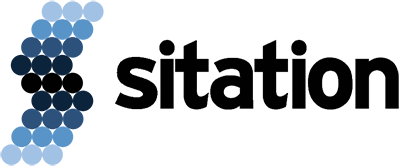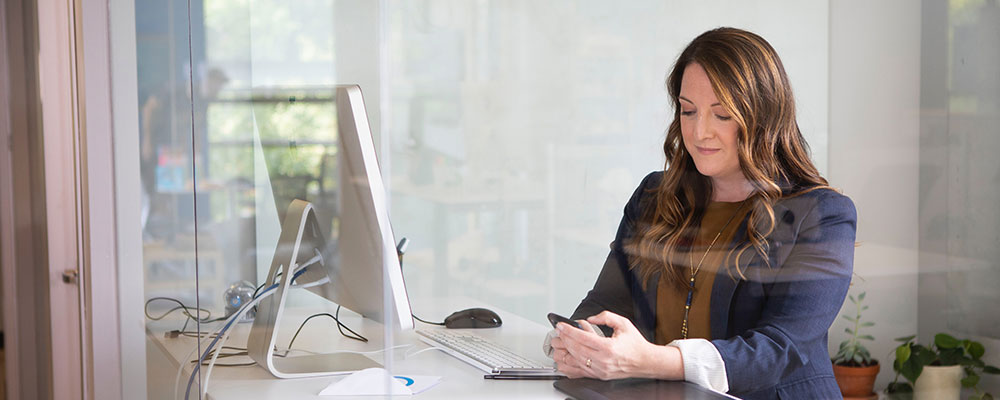Strong relationships are fundamental to success in businesses of any size or market. The trust we build with our clients and colleagues allows for the open communication and collaboration necessary for fruitful engagements. We now find ourselves in a new business landscape where there is no travel, no handshakes, no face-to-face meetings, no client dinners or happy hours, no pre-meeting chit chat. How do we build, and even more significantly, maintain these essential connections?
We can’t cut and paste business as usual into an online environment. We must build new bridges.
Here are a few things to consider as we do so:
TAKE TIME TO GET TO KNOW YOUR CLIENTS PERSONALLY
We’ve lost the opportunities for the comforts found in human interaction that we once assumed. We all feel isolated. Now, more than ever, it is important to take the time to get to know your clients personally. As Maya Angelou once said, “People will forget what you said, people will forget what you did, but people will never forget how you made them feel.” We must foster an inclusive, empathetic culture. People can’t focus on work when they are worried or fearful. There is enough of that inherent in our current environment so don’t pile on. Leave space to chat and connect on things important to their life, not just shared work deliverables. We may not be able to take clients to dinner anymore, but we can still take the time to bond. Virtual happy hours/coffee dates or shared learning opportunities are helpful connection points. Simultaneously, we need to be extra aware of respecting one another’s time and energy by keeping meetings concise. Shorter but more frequent meetings are better in this environment. Be on time for your meetings and communicate action items promptly.
BE FLEXIBLE WITH DAY-TO-DAY IMPOSITIONS
Do not be so committed to your agenda that you don’t appreciate if your client is too tired, stressed or distracted for the conversation. Read your audience. Be willing to reschedule to accommodate when needed. Be patient when kids, pets, and life circumstances overlap with work time.
Not everyone is tech savvy and working from home can exaggerate technical challenges and heighten frustration. Be patient, kind, and lighthearted when someone forgets they are on mute or can’t figure out how to work their camera. Offer “me too” experiences and helpful suggestions without condescension. Your empathy will speak volumes when your counterpart may be struggling with technical issues.
LISTEN AND LOOK AT THE SPEAKER ON VIDEO
Be ready to give your full attention while on calls and video conferences. Come prepared to engage fully, as you would if you were in the room together. Focus your approach on how you can help both the person and their business. Be forthright but empathetic in delivery.
Keep your camera on as much as possible; people want to see you face. Make sure you make eye contact with the camera. Enjoy the kids and pets, enjoy the home office background (or blur background if it’s distracting) but be conscious of what’s behind you as well as the face your present. This also allows you to pay attention to body language – take that valuable opportunity. Much can be communicated without interrupting one another using this approach.
ESTABLISH AND FOLLOW THROUGH ON YOUR COMMUNICATION PRACTICES
Respond quickly to email–it shows they are important to you and you are paying attention. It establishes confidence. You can improve your response time with communication templates for some things. For example, a confirmation email that lets them know you received their message and that you will get back to them by “x” time — then follow through. Use placeholders to personalize names and pertinent details to customize.
Use “Active Listening” techniques. Ask open ended questions and reflect your understanding of what they said. Don’t ignore signs of dissatisfaction. Clarify by asking, “You seem uncomfortable with…” Then give them a chance to clarify. Maybe they are uncomfortable or maybe their kid just spilt cereal on the dog. Try to see things from the client’s perspective instead of focusing on making them see yours.
What communication venues does your client prefer and for what purposes? Email, video conferencing, instant messaging? Familiarize yourself with their preferred tools. Using more than one tool helps ensure the messages are landing. Repetition is a pro not a con.
Be sure you know the necessary recipients so when they see a communication from you, they know it is applicable to them. Activity-level RACIs can be useful if you have multiple workstreams with the same client.
Provide regular, digestible status updates. Make deliverable and due dates clear. The client needs to feel they are in the know throughout your engagement with them.
Agree up front to frequency and venue of communication. Take a temperature check on a regular basis if these agreements are working as some phases in a project may require more thorough communication than others.
TAKE CARE OF YOURSELF
Concerns over the coronavirus have forced us into our home office as a precaution to stay safe and healthy. Managing your stress levels in that environment is key in bringing your best self to resource for your client. A bit of self-care goes a long way. Start your day NOT doing work. It’s tempting to roll out of bed and dive right in immediately. But in the days before COVID, the time we took to get ready, prepare breakfast, and even commute to work, allowed us the time we need to warm up our engines so to speak. Taking time to gather your thoughts and set an intention for the day and do some self-care is still important even if we work from home. Take a morning walk or stretch, leave time for a bit of tea and reflection before your start your day.
CHUNK YOUR TIME
Working from home means life and work are not balanced, they are blended. So, set aside specific working times with specific purposes. Let your household know when you are not to be disturbed and when you are taking a break and can be engaged. Turn off push notifications to keep yourself from being distracted by non-essential communication, then set reminders to check your inbox regularly but on your terms. Set a specific time to quit for the day. Down time is important to renewal. Take the time to tell someone about what you accomplished that day. This is no longer a built-in ritual by our comings and goings, but it is nevertheless important to our mental well-being.




